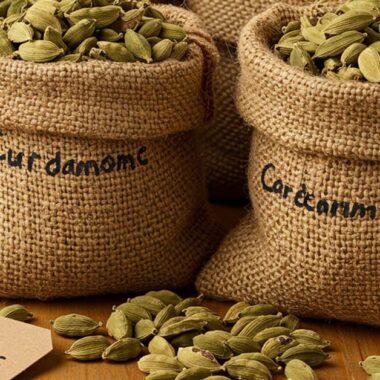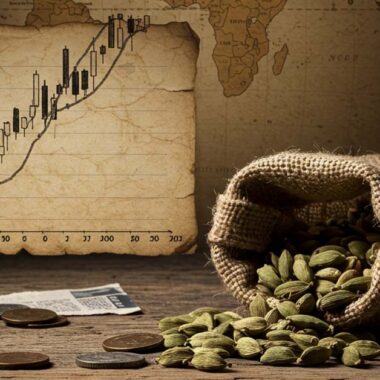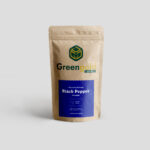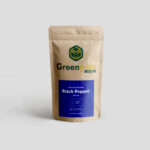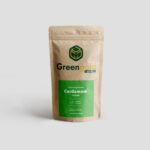Cardamom, known as the “Queen of Spices,” thrives in specific climatic conditions. Its cultivation, like many crops, is highly sensitive to the environment. Climate change is already affecting cardamom farming in several parts of the world, especially in regions where cardamom grows naturally, like the Western Ghats in India, Central America, and Southeast Asia. As global temperatures rise and weather patterns become increasingly unpredictable, the future of cardamom farming faces new challenges.
In this blog, we’ll dive into the impact of climate change on cardamom cultivation and explore how farmers can adapt to these changes. 🌿
1. Changing Rainfall Patterns ☔
Cardamom plants thrive in humid, tropical climates with consistent rainfall. However, climate change has led to shifts in precipitation patterns, which can have a profound effect on cardamom cultivation.
How it affects cardamom:
- Erratic rainfall can lead to both droughts and excessive rainfall.
- Drought periods can stress the plants, leading to poor growth and reduced yields.
- Heavy rainfall can cause flooding, damaging the plants and leading to root rot or other diseases.
Farmers are finding it harder to predict rainfall patterns, making it difficult to plan irrigation schedules and protect the crop from waterlogging or drought stress.
2. Temperature Fluctuations 🌡️
Cardamom requires a stable temperature range, ideally between 20°C to 30°C (68°F to 86°F), to grow successfully. Rising temperatures due to climate change can put cardamom crops under stress.
How it affects cardamom:
- Extreme heat can lead to wilting, poor growth, and flower drop, ultimately reducing the yield.
- Heat stress can also impact the quality of the cardamom pods, resulting in smaller or lower-quality produce.
Warmer temperatures can also create an environment conducive to pests and diseases, adding to the challenges faced by cardamom farmers.
3. Increased Pest and Disease Pressure 🦠
As global temperatures rise and humidity increases, pests and diseases that affect cardamom are likely to thrive. Warmer and wetter conditions provide the perfect breeding ground for a range of pests, such as cardamom thrips, and fungal diseases like leaf spot and root rot.
How it affects cardamom:
- Increased pest populations can lead to more frequent pest infestations, damaging crops and reducing yields.
- Fungal and bacterial diseases can spread more rapidly in a warmer, wetter climate, threatening cardamom plants.
Sustainable farming methods, such as integrated pest management (IPM), are essential to tackle these challenges without relying on harmful chemicals.
4. Soil Degradation and Erosion 🌾
Cardamom thrives in well-drained, fertile soils. However, climate change can exacerbate soil erosion and nutrient depletion, which in turn affects crop health and productivity.
How it affects cardamom:
- Heavy rainfall can cause soil erosion, washing away the topsoil that is rich in nutrients essential for cardamom growth.
- Increased temperatures can lead to soil dehydration, which affects root growth and water retention capacity.
Farmers will need to adopt soil conservation techniques such as mulching, terracing, and cover cropping to maintain soil health and ensure sustainable cardamom farming.
5. Altered Growing Seasons 🌱
Cardamom’s growing cycle is sensitive to seasonal patterns. Climate change has disrupted traditional growing seasons, leading to shifts in planting and harvesting times.
How it affects cardamom:
- Delayed planting or earlier harvesting can impact the quality and yield of the cardamom crop.
- Unpredictable growing seasons can make it difficult for farmers to plan for future harvests and market demands, leading to uncertainty in production.
Farmers may need to adjust planting schedules and adopt climate-resilient crop varieties to adapt to these changing patterns.
6. Water Scarcity 💧
Climate change is contributing to global water scarcity in many parts of the world. As freshwater sources become more strained, access to irrigation for cardamom plantations becomes increasingly difficult.
How it affects cardamom:
- Decreasing water availability can affect the crop’s ability to grow properly, leading to stunted plants and reduced yields.
- Water stress can make cardamom more vulnerable to pests, diseases, and heat stress, ultimately affecting the quality of the spice.
To tackle water scarcity, cardamom farmers can adopt water-efficient irrigation systems, such as drip irrigation, and implement rainwater harvesting techniques to ensure consistent water supply.
7. Threats to Biodiversity 🦋
Cardamom farming is often done in diverse, natural ecosystems, especially in regions with rich biodiversity. Climate change threatens this biodiversity, which can directly affect cardamom cultivation.
How it affects cardamom:
- Loss of forest cover due to changing climates or deforestation can disrupt the natural ecosystem, affecting the conditions that cardamom needs to thrive.
- Climate-induced migration of pests and other plants can lead to competition or the spread of new diseases and pests that weren’t previously an issue in cardamom-growing areas.
Maintaining agroforestry practices and forest conservation is vital to preserve biodiversity and protect cardamom crops from such threats.
🌱 Adapting to the Changing Climate 🌍
While climate change poses significant challenges for cardamom cultivation, there are several strategies that farmers can adopt to mitigate its impact:
- Adopt climate-resilient farming techniques such as agroforestry, water-efficient irrigation, and organic farming.
- Use climate-resilient cardamom varieties that can withstand temperature fluctuations, pests, and diseases.
- Implement soil conservation measures like mulching and terracing to prevent soil erosion and retain moisture.
- Collaborate with local governments and research organizations to get access to climate data and adaptive strategies for cardamom farming.
🌿 Conclusion 🌍
Climate change is undeniably impacting cardamom cultivation, from erratic rainfall and temperature fluctuations to increased pest pressure and soil degradation. As cardamom is a high-value crop, farmers must adapt to these challenges in innovative ways to ensure sustainable and high-quality production. By adopting sustainable farming practices and working to create more climate-resilient farming systems, cardamom farmers can continue to thrive despite the changing climate.
At Greengold Guide, we are committed to promoting sustainable cardamom farming to ensure that the spice remains available for generations to come. 🌱

